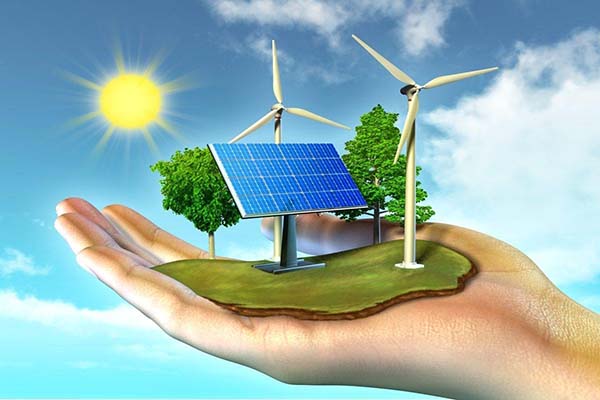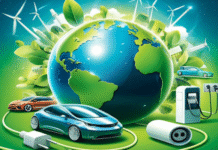The alternative energy sector will be characterized by continued innovation, increased adoption, and a more integrated and sustainable energy ecosystem. Alternative energy advancements will bring along a sustainable future at outset of India’s green growth story.
India has all the place, policy, demographics and ecosystem to make a remarkable trajectory in the Alternative Energy sector.
According to latest reports, India’s wind power capacity is 44.73 GW. On the other hand, solar power accounts to 73.31 GW. Whereas, biomass/co-generation inks 10.2 GW and lastly small hydro power enjoys 4.98 GW. Solar power has been gaining significant traction in India, with numerous large-scale solar parks and rooftop solar installations popping up across the country. The government has been actively promoting solar energy through various initiatives, such as the Jawaharlal Nehru National Solar Mission, which aims to make India a global leader in solar power generation.
Wind power is another key player in India’s renewable energy landscape. The country boasts one of the largest wind power capacities in the world, with wind farms dotting its coastlines and windy regions. The government has been encouraging wind power projects through incentives and policies, attracting both domestic and international investors.
India is also exploring other forms of alternative energy, such as biomass, hydropower, and even tidal energy. These diverse sources of renewable energy contribute to a more sustainable and cleaner future for India.
Technological Advancements Driving the Alternative Energy Sector in India
Solar energy has seen remarkable advancements. High-efficiency solar panels, such as monocrystalline and thin-film panels, are now widely available, converting sunlight into electricity more efficiently. Moreover, solar tracking systems have been developed to maximize energy generation by following the sun’s path throughout the day.
Wind turbine technology has evolved significantly, enabling higher energy production. Modern turbines feature larger blades and improved designs for capturing more wind energy. Additionally, floating wind turbines are being developed to harness wind power in offshore locations, expanding the potential for wind energy generation.
One of the challenges of renewable energy is intermittency. However, energy storage technologies have made great strides. Lithium-ion batteries have become more efficient and cost-effective, allowing the storage of excess energy for later use. Emerging technologies like flow batteries, compressed air energy storage, and hydrogen storage are also being explored to enhance energy storage capabilities.
Geothermal Energy and Smart Grid Integration
Geothermal energy harnesses heat from the Earth’s core. Enhanced Geothermal Systems (EGS) technology has made it possible to extract heat from areas with low natural geothermal resources. This innovation expands the geographical reach of geothermal energy and makes it more accessible.
The development of smart grid technology has revolutionized the way energy is managed and distributed. Smart grids enable real-time monitoring, efficient energy transmission, and integration of renewable energy sources. It allows for better management of energy demand, reduces wastage, and enhances overall grid reliability.
The Market of Alternative Energy in India
Solar energy has emerged as a dominant force in India’s alternative energy market. The country has witnessed a substantial increase in solar installations, both large-scale solar parks and rooftop systems. The government has implemented various policies and incentives to promote solar power, such as feed-in tariffs, auction mechanisms, and subsidies, attracting investments and driving market growth.
India has long been a leader in wind power, with a substantial installed capacity. The wind energy sector continues to grow, driven by favorable policies, such as accelerated depreciation benefits and generation-based incentives. The government aims to further enhance wind power capacity through offshore wind projects and repowering initiatives.
India has abundant biomass resources, making it an attractive market for biomass-based power generation and biofuels. The government has introduced policies to promote biomass utilization and bioenergy projects. Biomass power plants, biogas plants, and biofuel production units are being established across the country.
Hydroelectric Power Contribution
India has a significant potential for hydroelectric power, and it remains an important source of renewable energy. Large-scale hydroelectric projects, as well as small and micro hydro projects, are being developed to tap into this potential. The government encourages private sector participation through policies like competitive bidding and viability gap funding. India is actively exploring emerging alternative energy technologies. Tidal energy, wave energy, and ocean thermal energy conversion (OTEC) are being researched and tested in coastal regions. Additionally, the country is investing in energy storage solutions to enhance the integration of renewable energy sources into the grid.
Government Commitment towards Alternative Energy
The Indian government’s commitment to renewable energy, backed by favorable policies, incentives, and ambitious targets, has attracted domestic and international investments, fostering a thriving alternative energy market. As the market continues to evolve, it presents opportunities for innovation, job creation, and a cleaner, sustainable energy future for India. 2024, the alternative energy landscape is expected to undergo further advancements and transformations.
Alternative Energy Sector in 2024
Solar energy will likely continue its impressive growth trajectory. Advancements in solar panel technology, such as increased efficiency and reduced costs, will make solar power more accessible and widespread. The installation of solar panels on rooftops, in solar parks, and even integrated into building materials will become more common.
Wind power will also continue to expand, with larger and more efficient wind turbines being deployed. Offshore wind farms, which harness stronger and more consistent winds, will gain further momentum. Collaborative efforts between countries may lead to the development of transnational offshore wind projects.
Energy storage technologies will play a crucial role in balancing the intermittent nature of renewable energy sources. Advancements in battery technologies, including improved performance, longer lifespans, and reduced costs, will enable more efficient energy storage. Large-scale battery storage systems and innovative solutions like flow batteries and hydrogen-based storage may become more prevalent.
The adoption of electric vehicles is expected to accelerate significantly by 2024. As EV technology improves and charging infrastructure becomes more widespread, we can anticipate a substantial increase in the number of electric cars on the roads. This shift will contribute to the demand for renewable energy and drive the need for smart charging solutions.
AI will play a crucial role in optimizing the management and operation of alternative energy systems. AI-powered analytics and predictive models will aid in maximizing the efficiency of renewable energy generation, storage, and distribution. Smart grids will leverage AI to balance supply and demand, enhance grid resilience, and enable dynamic pricing mechanisms.
The pursuit of alternative energy sources will extend beyond solar and wind. Other emerging technologies, such as geothermal energy, tidal energy, and hydrogen fuel cells, will continue to be researched and developed. These technologies have the potential to diversify the renewable energy mix and provide additional sustainable options.
Key Bottlenecks for India in the Growth of Alternative Energy
Key collaboration between the government, industry stakeholders, and research institutions will be a major tie-up growth for alternative energy to thrive in India. By overcoming these obstacles, India can further accelerate its transition towards a cleaner and more sustainable energy future.
Alternative energy sources like solar and wind power are intermittent by nature, dependent on weather conditions and time of day. Integrating large-scale renewable energy into the existing power grid poses challenges in maintaining grid stability and ensuring a consistent power supply. Effective grid management, energy storage solutions, and smart grid technologies are essential to address these issues.
Acquiring suitable land for renewable energy projects, especially solar and wind farms, can be a complex and time-consuming process. Balancing land use for agriculture, industry, and renewable energy projects presents challenges, requiring effective land allocation policies and streamlined approval processes.
Securing adequate financing for renewable energy projects remains a significant challenge. While the cost of renewable energy technologies has decreased over the years, upfront investment costs can still be high. Attracting long-term investments, both domestic and foreign, through favorable policies, incentives, and financial mechanisms is crucial for sustained growth in the sector.
Upgrading and expanding the existing grid infrastructure to accommodate the growing capacity of renewable energy sources is a significant challenge. Developing robust transmission networks to efficiently transport power from remote renewable energy sites to demand centers is essential. Investments in grid infrastructure are necessary to ensure seamless integration and reliable transmission of renewable energy.
While the Indian government has implemented various policies and incentives to promote renewable energy, a stable and consistent policy framework is necessary for sustained growth. Streamlining permits, approvals, and regulatory processes can help reduce project delays and uncertainties, promoting investor confidence.
Developing a skilled workforce to support the alternative energy sector is crucial. Training programs and educational initiatives need to be in place to equip individuals with the necessary skills for designing, installing, and maintaining renewable energy systems. Additionally, technology transfer and collaboration with international partners can accelerate the deployment of advanced renewable energy technologies.

















